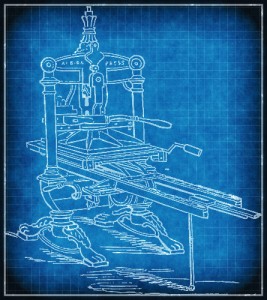How to build a better journalism school: Part 5, storytelling
The most common way journalism schools have adapted to a changing industry (at least based on my small survey of about 20 top programs) is the insertion into the curriculum of a course called, most often, “multimedia storytelling.”
This course description, from Northwestern, is typical:
Introduction to using multimedia skills to create effective web-based journalism. Still photography, photo editing, audio recording and editing, audio slideshows, video shooting and editing, video storytelling, web page creation and design, and exposure to Flash.
I find a lot not to like about that. Most importantly, it suggests that “multimedia” really means “everything except traditional, written stories.” I hate the idea of dividing journalism that way.
Beyond that, I quibble about including “web page creation and design.” Why that, and not tablet app design? Smartphone design? Soon-to-be smartwatch design? And just how much web design do you teach — HTML? HTML5? You’re throwing Flash in there (“exposure to Flash” — I have to wonder if the multiple meanings were intended), which is kinda like if my 1980 BSJ had included exposure to rotogravure.
So there’s no “multimedia storytelling” course in my proposed curriculum for an improved journalism school. Instead, I’ve got Storytelling I and Storytelling II. Both involve using all storytelling means — including traditional articles. The main differences: Storytelling I focuses on each student’s individual skills; they are taught to use each tool for that part of the story it tells best, to avoid redundancy, to ensure that each piece is of equal quality. Storytelling II allows students to be more focused on those tools they use best, but to learn to use them as part of a team.
The projects that result from Storytelling II will, I presume, be of higher quality than in Storytelling I. But that won’t be just a matter of more skills among the students. They will learn to coordinate and cooperate. I imagine some system in which each student on a team takes a turn at being in charge (more of a coach and chairman than a supervisor). No graduate of my curriculum should ever be caught asking a photographer to “art up” her story. My alumni will make fantastic assignment editors because they will evaluate every situation by asking which tools are needed and how each can best be used.
These courses will not spend much time going over the formulae for standardized journalism — the fill-in-the-blanks formats typically used for obituaries, crime stories and so on. I don’t want my graduates to be tied to traditional media. In fact, I don’t even want their view of storytelling to be tied only to journalism. From the New Journalism of the ’60s and beyond, and the wave of narrative journalism launched in the ’90s, we’ve seen that the techniques of fiction can — used judiciously — improve our craft. I like the hint of that in this description of a required storytelling course for Pepperdine’s journalism bachelor’s (PDF):
This course will introduce core concepts of storytelling and visual aesthetics that can be adapted to journalism, graphic design, documentaries and drama. Students will present their narratives demonstrating the use of various media.
A side note: When I was at Northwestern, we journalism majors had to take a class in public relations. I will confess to having bridled at the thought. My ideas about the relationship between the two fields have changed since then. While my curriculum was not designed with the needs of a PR major in mind, I should point out that most of my core courses — Facts, Truth, Grammars and the two Storytelling courses — would be equally useful to both fields.
This is the fifth in a series about improving journalism education.

